This easy lemon coconut layer cake is flavoured naturally with lemons and coconut milk and smothered in coconut buttercream and coconut. An impressive yet simple Easter showstopper!

This post may contain affiliate links. For more information, see my Full Disclosure.
Easter is almost here, and I’ve been waiting until this week to share this recipe as I think it would be the perfect cake to make for Easter!
This lemon coconut layer cake is made up of a moist, fluffy sponge cake flavoured naturally with lemon juice, zest and coconut milk. It’s smothered in a dreamy coconut buttercream and finished with a coating of desiccated coconut! It’s zingy, sweet and indulgent and surprisingly easy to make!
(If you prefer chocolate cake, you could try my Chocolate Coconut Cake which would also be a great Easter bake when topped with Mini Eggs or other Easter treats)!

Lemon Coconut Layer Cake Recipe
I developed this recipe from my Lemon Raspberry Cream Cake recipe, but had to make some adjustments to allow me to add fresh coconut to the sponge, without making the cake dry!
I wanted the cake to be super zingy with lemon flavour, so it contains both fresh lemon zest and lemon juice. Plus, lemon drizzle syrup is also added to the cake layers after baking to really enhance the lemon flavour!
The coconut flavour comes from both canned coconut milk and desiccated coconut, both of which are added to the cake layers. Coconut milk is also added to the buttercream, before finishing the cake with more desiccated coconut!

Lemon Coconut Layer Cake Ingredients
This cake contains common ingredients which you should be able to find easily at your supermarket! The recipe card at the bottom of this blog post contains the full ingredient amounts, but in summary you’ll need:
- Plain flour is sifted to create a light base for the sponge cake layers
- Baking powder
- Bicarbonate of soda both these raising agents help the cake to rise, making it light and fluffy!
- Salt to balance the flavours and sweetness
- Butter is beaten with sugar to incorporate more air into the sponge layers, making them light and airy. It also adds a lovely buttery flavour of course!
- Caster sugar for sweetness and is beaten with the butter as mentioned above
- Eggs to bind the ingredients and give the cake its structure
- Vanilla extract for added flavour
- Canned coconut milk adds coconut flavour and moisture. Be sure to use the thicker canned type and not fresh coconut milk! I used Blue Dragon canned coconut milk, and I found it near the Asian cooking section in my supermarket!
- Desiccated coconut adds more coconut flavour and a little texture
- Fresh lemon juice and zest for a really zingy lemon flavour!
The coconut buttercream contains butter, icing sugar, more canned coconut milk and salt. These basic ingredients are beaten for a full five minutes to create a light-as-air, indulgent coconut buttercream!
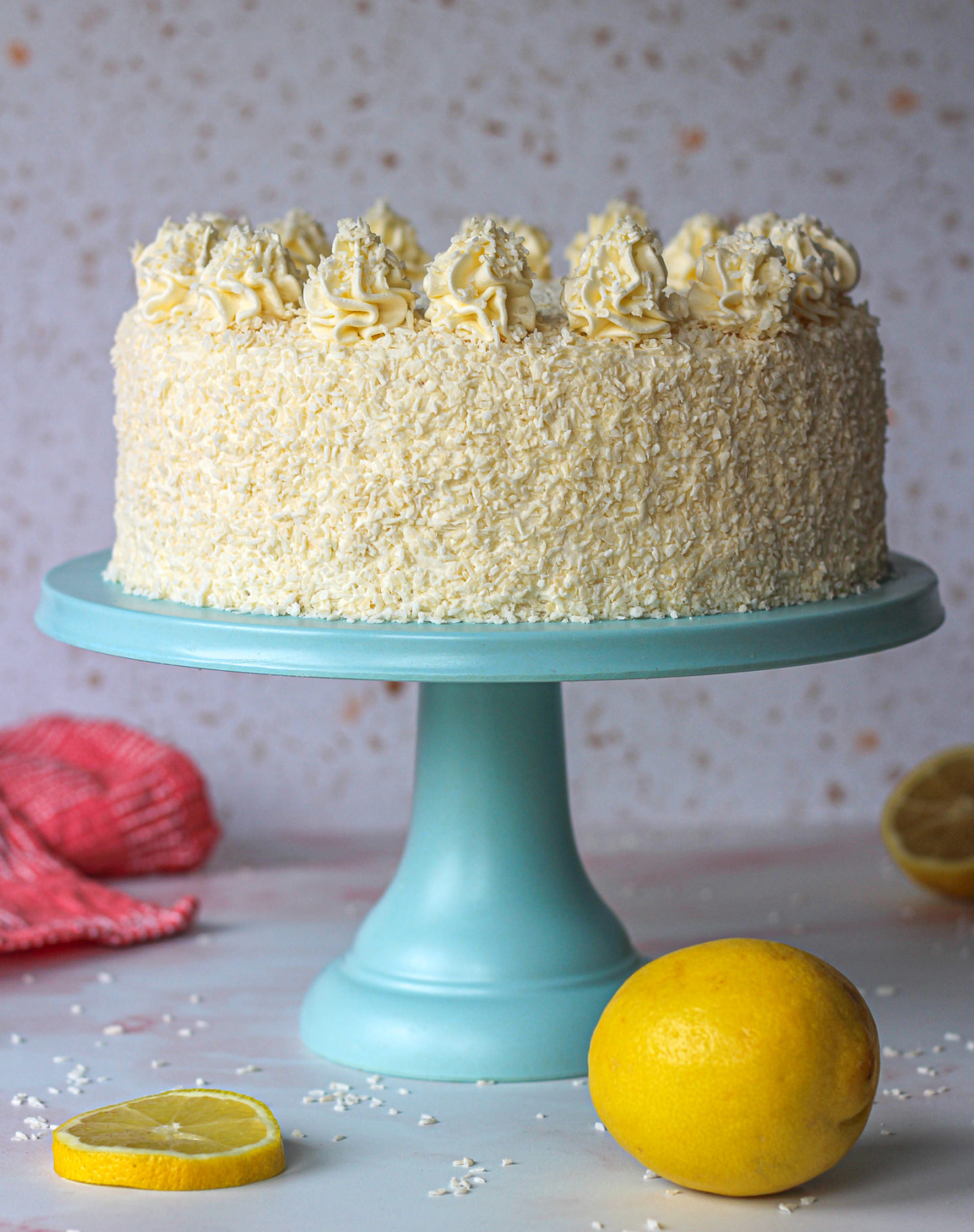
How to make a lemon coconut layer cake from scratch
I’ve added plenty of step-by-step photos to the recipe card at the end of this blog post, but here’s a little summary:
Lemon Coconut Cake Layers
- Preheat your oven to 160°C/140°C fan
- Grease and line two 20cm/8in round sandwich pans with baking or parchment paper. You could also simply spray each pan with non-stick baking pan spray
- Sift the plain flour into a medium-sized mixing bowl then add the baking powder, bicarbonate of soda and salt. Whisk to combine and set aside
- Using an electric stand mixer or hand mixer with beater/paddle attachment fitted, beat the butter and sugar for two minutes on medium speed until light and fluffy
- Add the eggs one at a time, beating on medium speed between each addition until combined
- Add vanilla extract, fresh lemon juice and lemon zest, then beat on medium speed until combined
- Next, add half the dry ingredients, beat on low speed until just combined and then repeat with the final half of dry ingredients
- Add the desiccated coconut and beat on low speed until just combined
- Finally, add the canned coconut milk and beat on low speed until just combined
- Pour the mixture into your two lined 20cm/8in round sandwich pans and level with a spatula
- Bake for around 30-35 minutes
- Leave pans to cool completely on a wire rack before assembling the cake!

How to make simple homemade coconut buttercream
- Using an electric stand mixer or hand mixer with beater/paddle attachment fitted, beat the butter on medium speed for two minutes to soften
- With your mixer running on low speed add the icing sugar slowly, a tablespoon at a time
- Add the canned coconut milk and salt then beat on medium-high speed for a full five minutes. This is what makes the buttercream so light and airy!

Tips for making the best homemade lemon coconut layer cake
- Make sure all of your ingredients are at room temperature before mixing them together. Cold ingredients like butter, milk and eggs straight from the fridge won’t incorporate smoothly and you’ll end up with a lumpy, uneven cake batter!
- To help make your cake as light and fluffy as possible, beat the butter and sugar for a full two minutes before adding the rest of the ingredients
- Try not to overmix the batter once the dry ingredients have been added – the more you mix at this stage, you more you develop the gluten and this can lead to a dense, dry sponge!
- I suggest baking the cake layers at 160°C/140°C fan. I found that baking it at this slightly lower temperature helps the cake rise more evenly with flat tops, which is ideal for layer cakes!
- To ensure your oven is at the right temperature (SO important when baking!) I highly recommend using an oven thermometer. They are relatively cheap and you’d be amazed at how inaccurate your oven temperature might be!
- To make your coconut buttercream really thick, light and creamy, beat it for a whole five minutes once all the ingredients have been added. This helps to incorporate lots of air particles into the mixture, resulting in a light-as-air buttercream!
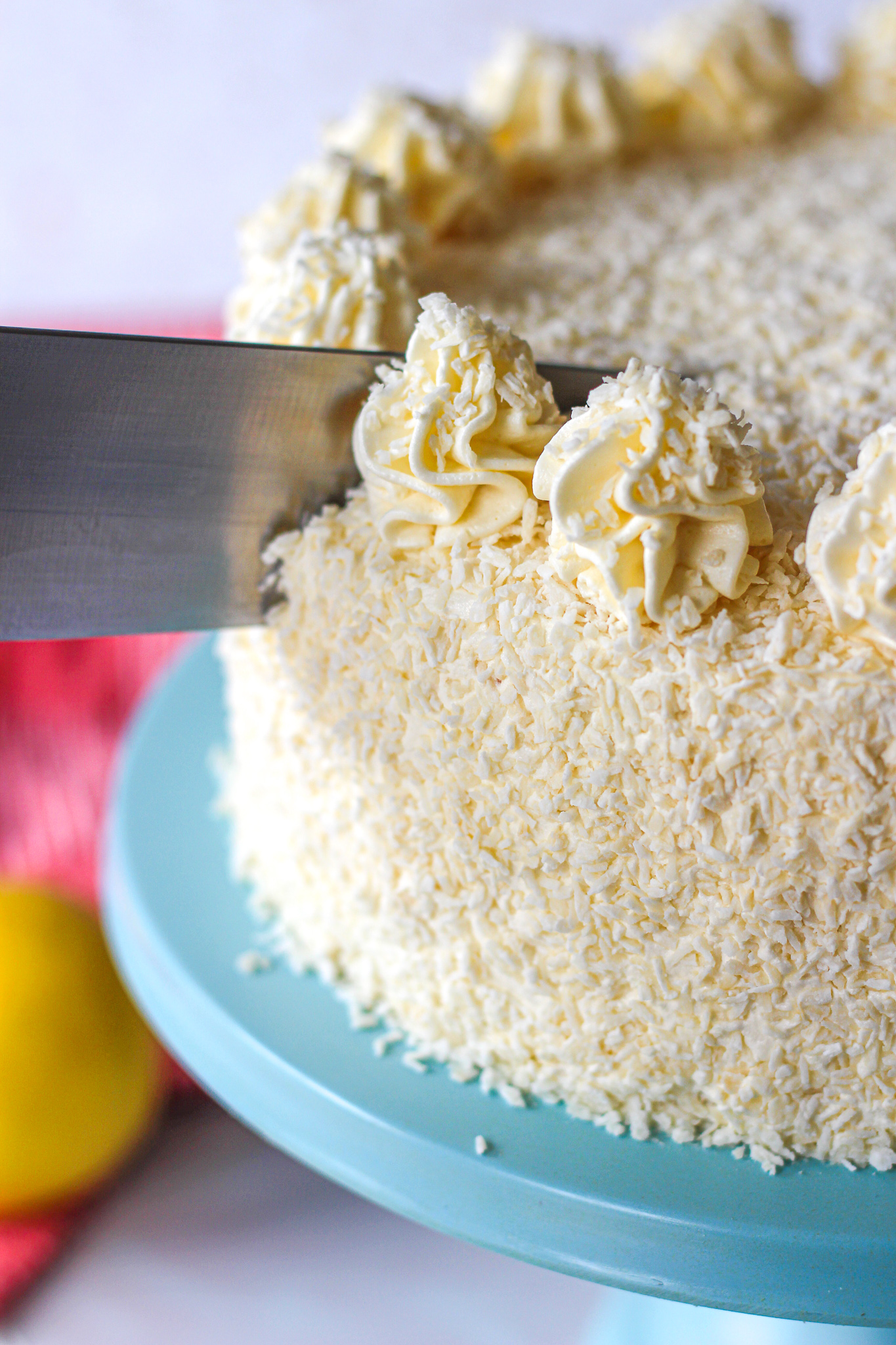
Lemon Coconut Layer Cake FAQs
How to decorate a layer cake with desiccated or shredded coconut
I won’t lie, this part can get quite messy! But I love the finished look, and it really does add the right level of coconut flavour to balance and complement the zesty lemon flavour.
Once you’ve smothered your coconut buttercream layer over the whole of assembled cake, scoop some desiccated coconut in the palm of your hand and press it carefully against the sides. You’ll drop some from your hand each time, but simply scoop it back up and keep going!
I go around the cake twice doing this, to get a fuller coating of coconut. It’s slightly less messy and difficult going around the second time as a lot of the buttercream would have been covered in coconut!
Why do I need to sift flour when making a cake?
I don’t always suggest doing this with my cake recipes, but for this recipe I strongly recommend not skipping this step. Sifting the flour aerates it, incorporating more air particles within the flour. This then helps make a lighter sponge cake.
This extra step is important in this recipe as the desiccated coconut within the sponge cake alters the overall texture slightly. To counteract this and create a light sponge, tricks such as sifting the flour, beating the butter and sugar together and adding a good amount of moisture to the cake all help create a moist, light cake!

Can I use fresh coconut milk instead of canned coconut milk?
Unfortunately not. Canned coconut milk has a much thicker, creamy texture which is required in this recipe to create a moist cake. Using fresh coconut milk will create a different texture and consistency. Canned coconut milk also tends to have a stronger coconut flavour!
Why do cake ingredients need to be at room temperature before mixing?
Cold ingredients simply don’t incorporate well when mixed with other room temperature ingredients. You can end up with a lumpy, uneven cake batter which won’t result in a great cake.
To avoid this, simply plan ahead a little and get your fridge ingredients out around thirty minutes or so before you plan on baking, to allow them to come to room temperature before you start!

How to store homemade lemon coconut cake
Due to the dairy content of the coconut buttercream this cake is best stored in the fridge. As cake tends to dry out a little quicker in the fridge, I suggest covering any exposed areas of cake (once you’ve sliced into it) with a layer of film, to help prevent it from drying out as quickly! This cake should then keep well for around 4 days.
Is this lemon coconut cake suitable for freezing?
Yes! It’s best to freeze the cake layers separately before assembling and icing as buttercream can often have a slightly different texture after freezing. However, I found the buttercream texture to be fine when freezing individual slices of this lemon coconut cake!
To freeze individual cake layers, keep in their cake pans and double wrap in film. If freezing slices of the finished cake, store in an airtight container and wrap it in film. I’ve not frozen an entire iced cake but it should freeze well when stored in a large airtight container and then wrapped in film. The cake should keep well for around 4 months.
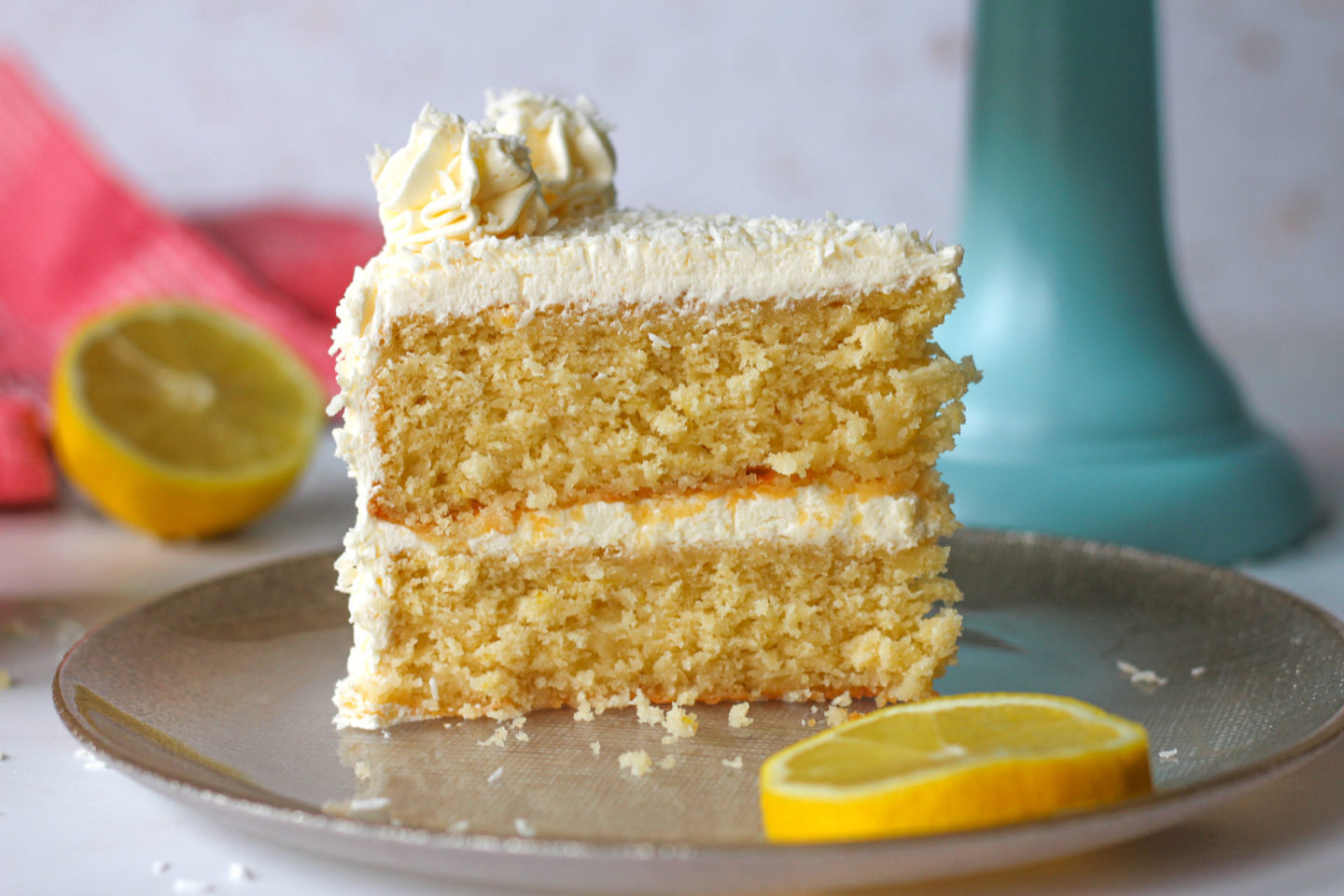
To conclude, this lemon coconut layer cake is:
- Sweet and zingy, with the perfect combination of lemon and coconut flavours
- Soft, light and moist
- smothered in an amazingly light and smooth coconut buttercream
- Surprisingly easy to make with plenty of step-by-step photos below to help along the way!
- The perfect Easter showstopper!
If you try this recipe I’d love to see! You can show me by tagging me @bakerjoblog or using #bakerjoblog!
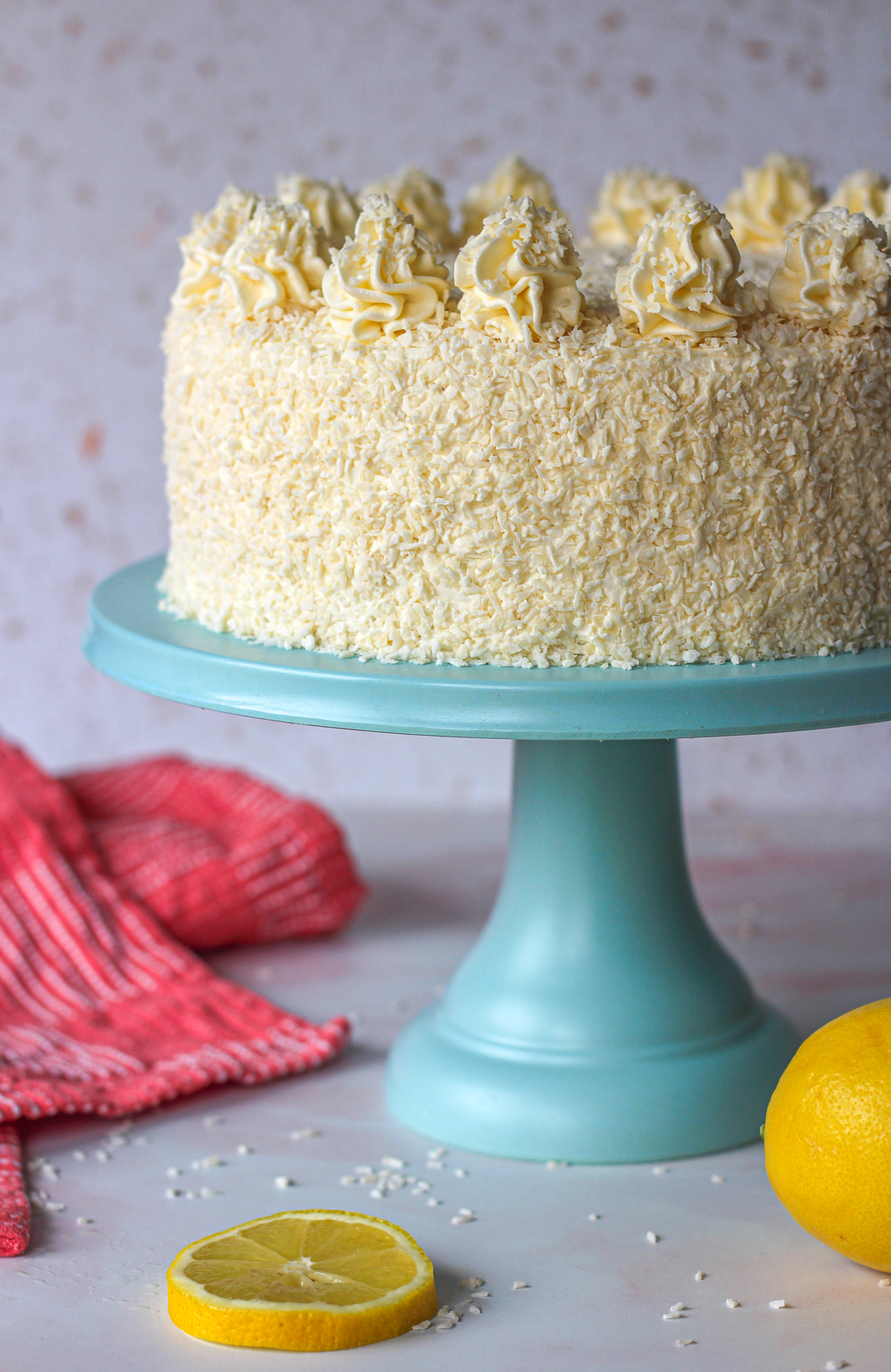
Other cake recipes to try:
- Vanilla Layer Cake with Vanilla Buttercream
- Chocolate Orange Bundt Cake
- The Bake Off Box: Signature Chocolate Cake
- Gingerbread Latte Cake
Other lemon and coconut recipes to try:
- Lemon Coconut Muffins
- Lemon Drizzle Loaf Cake
- White Chocolate Coconut Truffles
- Lemon Raspberry Cream Cake with Meringue Kisses
- Lemon Poppy Seed Muffins
- Chocolate Coconut Cake
- Lemon Blueberry Cupcakes
- Lemon Bars
- No-Bake Lemon Cheesecake
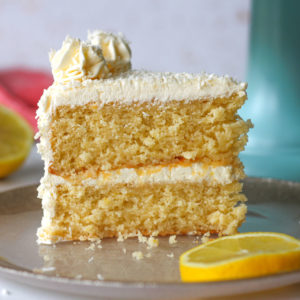
Lemon Coconut Layer Cake
Equipment
- 2x 20cm/8in sandwich/cake pans
- Stand mixer or hand mixer with beater/paddle attachment
- Medium and large mixing bowl
- Whisk
- Rubber spatula
- Palette knife
- Piping nozzle and piping bag (if you want to pipe swirls on top!)
Ingredients
Lemon Coconut Cake Layers
- 275 g plain flour sifted
- 2 tsp baking powder level
- 1/2 tsp bicarbonate of soda level
- 1/2 tsp salt level
- 160 g unsalted butter room temperature
- 275 g caster sugar
- 4 medium eggs room temperature
- 1 tsp vanilla extract
- Juice of 1 medium lemon about 45ml of juice
- Zest of 2 medium lemons
- 60 g desiccated coconut
- 200 ml canned coconut milk must be canned, not fresh
Lemon Drizzle Syrup
- Juice of 1 medium lemon about 45ml of juice
- 90 g caster sugar
Coconut Buttercream
- 450 g icing sugar sifted
- 200 g unsalted butter room temperature
- 60 ml canned coconut milk must be canned, not fresh
- 1/2 tsp salt
Coconut Topping
- 65 g desiccated coconut, divided 15g sprinkled between the cake layers, 50g to cover the iced cake to finish!
Instructions
Lemon Coconut Cake Layers
- Preheat your oven to 160°C/140°C fan.
- To a large mixing bowl sift in the plain flour, then add the baking powder, bicarbonate of soda and salt. Whisk to combine and set aside.
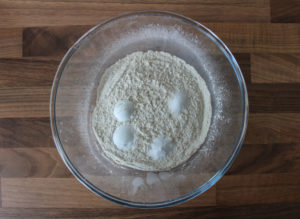

- Using a stand mixer or hand mixer with a large bowl and beater/paddle attachments fitted, beat the softened butter and caster sugar on medium speed for a full two minutes until lighter in colour, thick and fluffy.
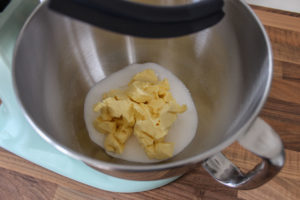

- Add the eggs one at a time, beating on medium speed between each addition until just combined.
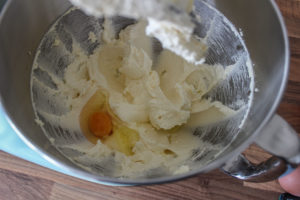
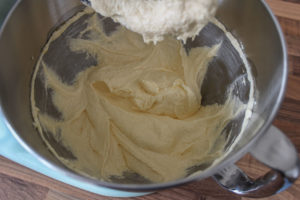
- Add the vanilla extract, fresh lemon juice and lemon zest and beat on medium speed again until just combined.
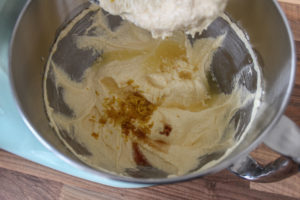
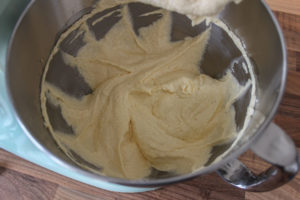
- Add half the dry ingredients and beat on low speed until just combined.

- Repeat with the final half of dry ingredients.

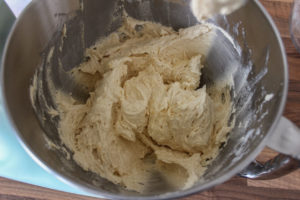
- Add the desiccated coconut and beat on low speed until just combined.

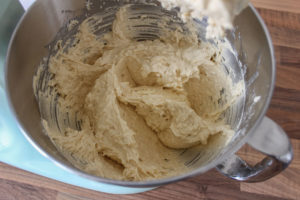
- Finally, add the canned coconut milk and beat on low speed until just combined.
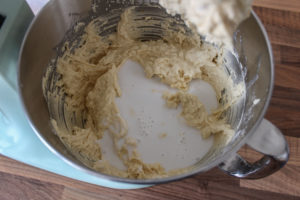
- Pour the mixture evenly into your two lined 20cm/8in sandwich/cake pans and level the top with a spatula. Bake for around 30-35 minutes. You'll know they are baked when a cocktail stick or cake skewer inserted into the centre of the cake comes out clean!
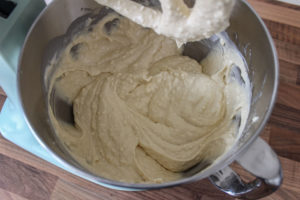
- While the cakes are baking, make your lemon drizzle syrup by simply stirring the caster sugar and lemon juice in a small bowl with a spoon to combine.
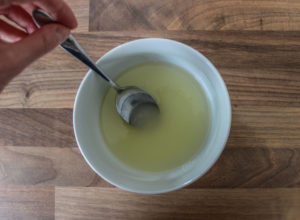
- Once the cakes are baked, place the cake pans onto a wire rack.
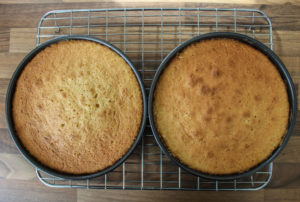
- While the cakes are still hot, poke each cake all over with a cocktail stick or cake skewer.
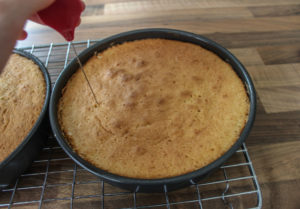
- Pour the lemon drizzle syrup on top of each cake. You can then spread it evenly across the top of each with a pastry brush.

- Leave the cakes to cool completely on the wire rack before assembling and icing the cake!
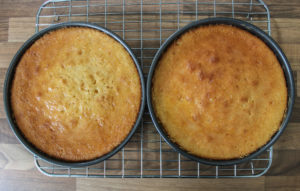
Coconut Buttercream
- Add the softened butter to a large mixing bowl and using a stand mixer or hand mixer with the paddle/beater attachments fitted, beat on medium speed for a full two minutes to soften.
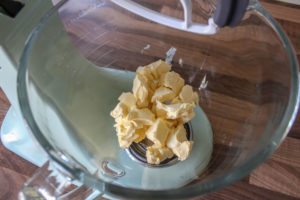
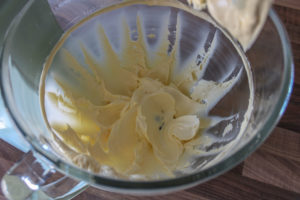
- Next, with the mixer running on low speed, slowly add the sifted icing sugar a tablespoon at a time. It will be quick thick once all the icing sugar has been added.
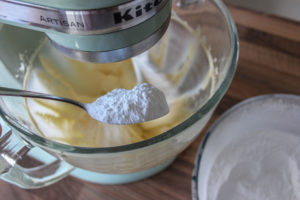
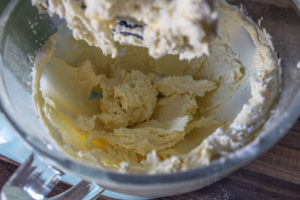
- Scrape down the sides of the bowl with a spatula, then add the canned coconut milk and salt. Beat the mixture on medium-high speed for a full five minutes until much thicker, light and fluffy.
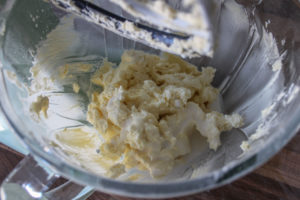

Assembling the layer cake
- Place one cake layer top side down onto your chosen cake stand or plate and then peel away any baking or parchment paper.
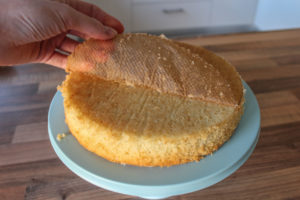
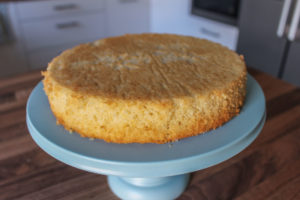
- Add some coconut buttercream and spread it evenly across the cake layer using a palette knife or spatula.
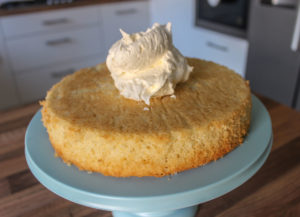

- Sprinkle 15g of desiccated coconut across this buttercream layer.
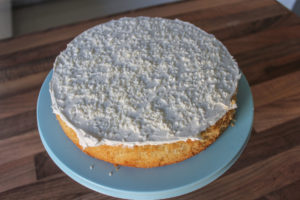
- Place the second cake layer on top and peel any baking or parchment paper away.
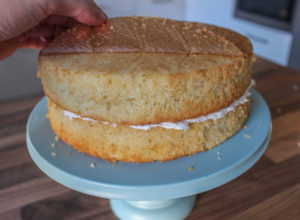
- Cover the sides and top of the cake with a thin layer of buttercream using your palette knife or spatula. This thin layer acts as a 'crumb coat' – it helps to trap any loose crumbs so that your second layer of icing looks much neater and smoother!
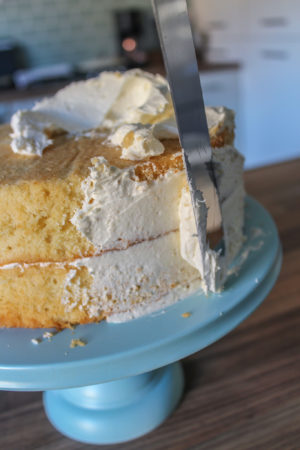
- Place the cake in your fridge for around 30 minutes to allow the buttercream to chill and firm up slightly.
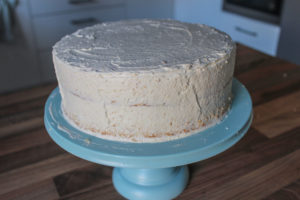
- Next, add a thicker second coat of buttercream around the sides and top of the cake using your palette knife or spatula.
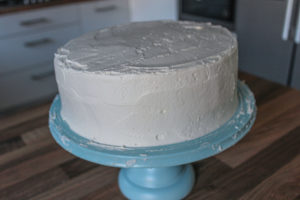
- Finally, add your remaining 50g of desiccated coconut to the top and sides of your cake. This can get quite messy! I scoop some coconut in the palm of my hand and carefully press it into the sides. I like to go around the cake twice so that the coconut coating is thicker and more even. I find the second layer much easier to apply as I can press my hand onto the cake without so much buttercream sticking to my hand!
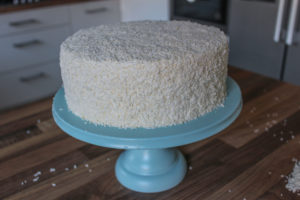
- Finally, you can add some swirls around the top of your cake with any leftover buttercream! Simply use your chosen piping nozzle, fit it to a piping bag and fill it with the remaining buttercream. Then create whatever swirls or patterns you wish!I like to finish the swirls with a final sprinkling of coconut.
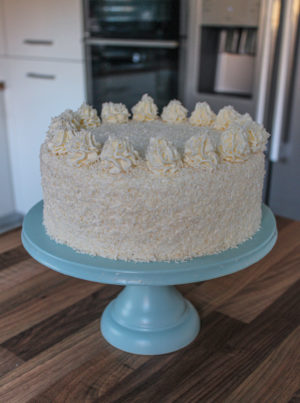
- This cake is best kept in an airtight container in the fridge (due to the dairy content of the buttercream) and is best eaten within 4 days.
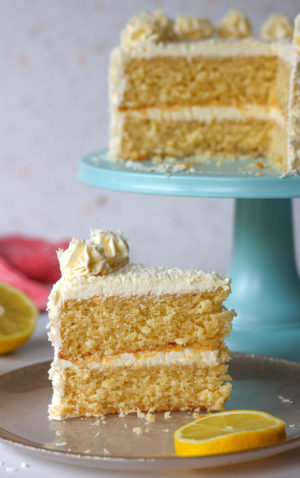
This is such a delicious cake, very easy recipe to follow.
Best cake ive ever made! Next chocolate one ♡♡♡♡